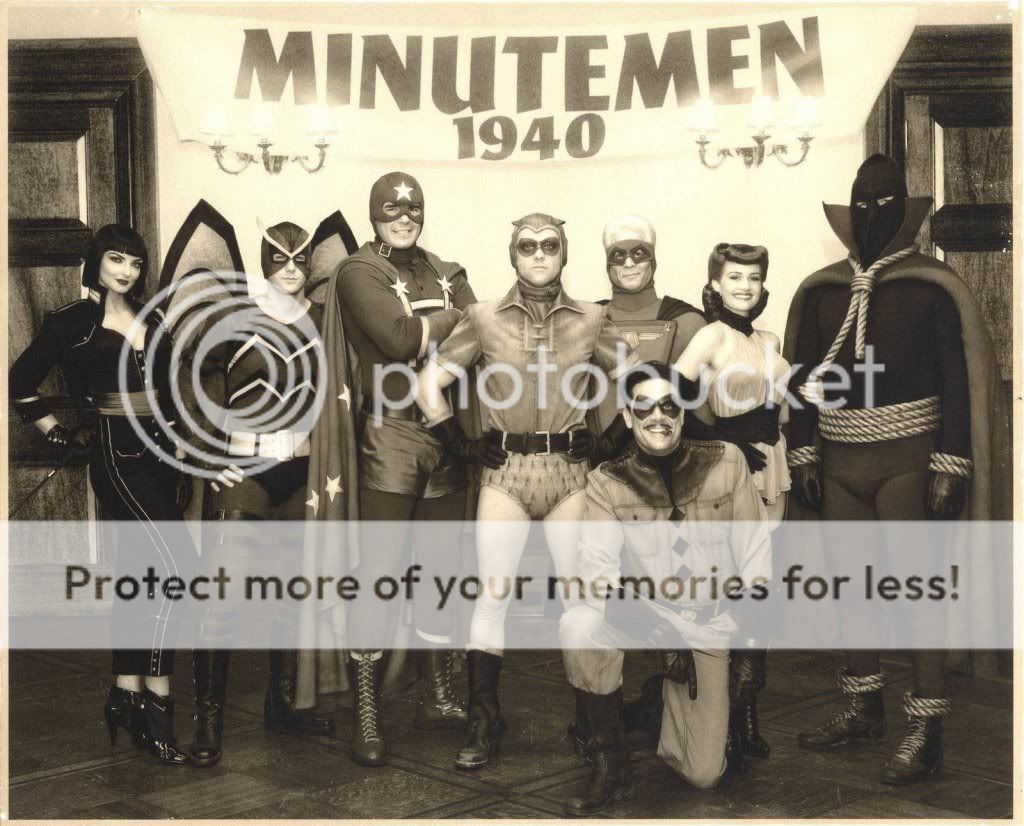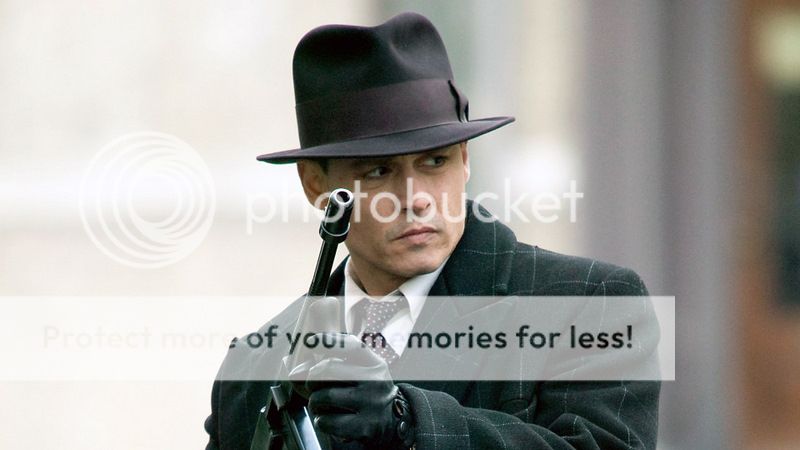Alan Moore’s 12-issue, 800 page graphic novel from 1985 was deemed unfilmable for over two decades. Breaking barriers and taboos in the graphic novel realm, Watchmen contains the ideal of superheroes that are average human beings.
In an alternate reality, basing itself in the 1930’s and moving forward through to the 1980’s, average citizens disguise themselves in costumes and parade into the night, fighting crime. They form a group called The Minutemen and are condoned by the police force and government. Fast forward to the present, the year being 1985 because the novel was written and drawn at that time, the Minutemen have changed into The Watchmen and they are a collective of second-generation superheroes, in some cases they are the original members’ offspring. What's interesting about the concept of average citizens fighting crime on their own time is that they have their own personal demons and problems; drugs and other addictions for one, and a lack of super powers.
In the film, faithfully borrowing from the graphic novel, the Watchmen are Dan Dreiberg/Night Owl II (Patrick Wilson), a scientist who had inherited his father’s millions and designed costumed suits for combat and a floating airship; Laurie Jupiter/Silk Spectre II (Malin Akerman), who reluctantly inherited the title from her former superhero mother Sally Jupiter/Silk Spectre I (Carla Gugino); Adrian Veidt/Ozymandias (Matthew Goode) is the self-proclaimed “Smartest Man in the World” who had built an empire through technological wonders, political support and intel, and action figures; Rorschach/Walter Kovacs (Jackie Earle Haley), who wears a mask that shifts Rorschach Test blot images that symbolize his thoughts and feelings, and is slightly on the unstable side; Edward Blake/The Comedian (Jeffrey Dean Morgan), who supported and fought for his country from WWII to Viet Nam, performed political assassinations, and found out how depressing the American Dream really is; and Jon Osterman/Dr. Manhattan (Billy Crudup) was a nuclear physicist who, in a freak accident was ripped apart atom by atom, and in a parallel universe had pieced himself back together. Now he is a sort of demi-God.
Dr. Manhattan is the most fascinating character in the film because he can see and sense existence in a quantum universe and existence, and sees time in a none-linear manner. He grows bored on Earth, teleports himself to Mars, constructs a fortress out of glass and ponders his own existence and purpose behind his past.
The best performance in the film, unanimously, is that of Jackie Earle Haley’s Rorschach but I still find the performance to be sub-par because he is masked throughout most of the film and speaks in a gruff voice, channeling Christian Bale’s Batman. My favourite performance, however is a split between Billy Crudup and Patrick Wilson. Crudup plays Dr. Manhattan to perfection: he’s calm and speaks in a tranquil voice, channeling melancholy, has the body of Adonis (thanks to decent CGI work), and always looks and sounds depressed. When he says that he had lost faith in mankind and needs a good reason to save them we feel his pain; Patrick Wilson plays Night Owl II like a very average, slightly chunky man who wears prescription glasses and is slightly impotent, but he plays him with conviction. We sense that Dan Dreiberg is average and doesn’t care about his past as a superhero.

Watching the film we notice that it’s entirely a character-driven piece. However, the drawback is that the film is three hours long so developing six main characters while providing intensive back-stories becomes tiresome rather quickly. We do not lose interest in the characters, only in the flow of the film.
There is some action in the film but it’s designed to sound and feel cheesy, and I don’t know why. When someone swings a punch we hear the air whooshing and the connecting punch’s sound effect is like that of a video game; the choreography is similar to Kung Fu flicks’ and director Zack Snyder insists on super slow motion throughout a good half of the film. What results is that we see someone walking towards the camera in normal speed that turns into slow motion, and then the speed slows down even more. Snyder does that many times throughout the film and eventually we realize that we are watching many montages. Every character’s back-story is simply a montage showcasing the time periods changing, and played to appropriate pop cultural music. It’s easy to follow but one cannot take the film seriously. For example the film’s opening credits showcase the 1930’s to the 1980’s in a long, super slow motion montage that plays Bob Dylan’s “The Times They Are A-Changin’”. It’s a nice piece of cinema but ultimately, Snyder uses that technique throughout the three hours following and we grow tiresome of the film’s style and notice the lack of substance.

Where the film has the most substance is in its beginning, where The Comedian's murder by a shadowy assassin provides the film with a detective story aspect, a flash-back structure, and finally, at the end when the “bad guy” is revealed and is revealed to be doing something terrible for the greater good. There is a lot of philosophy in the film in many different aspects, and especially in its third act, but I find the film as a whole to lack substance and decent performances. I liked only three characters and their actors in the film, and their combined determination to find out the truth is muddled by MTV-style music videos, criminally overused slow motion, lackluster CGI, and a musical score that changes styles with each montage. Plus, every licensed song in the film is a remix or cover. Ugh... terrible soundtrack.
Fans of the graphic novel will notice that Zack Snyder emulates images from the source material faithfully into his film. Some shots are exactly similar in composition and colour but that‘s just using the novel as a storyboard. The rest is in the screenplay which is faithful and ironically, therefore, doesn’t work as a three hour film.
Maybe if Zack Snyder invested the budget toward a Made-for-TV, 10 hour mini-series we’d see something worth mentioning. As the story is already fragmented in its entirety, a miniseries makes a lot more sense.
Watchmen is far too long and mostly uninspired but contains some very interesting ideals, like the Keene Act: in 1977, Senator Keene passed a bill that outlawed vigilantism and asked all costumed heroes to reveal their true selves. Everyone except Rorschach and The Comedian had done so. Rorschach is slightly nuts and his mask is his actual personality, removing it showcases the true face he had lost in the past and hates; The Comedian still works for the government but under guise, and Dr. Manhattan works for the government as well, until a conspiracy had led him to outcast himself to his Martian fortress.
Good storytelling exists in the graphic novel and it contains drab, primary colours that insinuate a dreary existence. New York City looked like the real one: decrepit, beautiful, and old; not without its ups and downs. But in Snyder’s film, the entire universe is colourful and glossy. It’s not the “film effect” because in post-production everything can change; day can become night and gloss can be superimposed to apply a surreal effect. The graphic novel contains certain realism and the film lacks it entirely.
To sum it up, I should have watched the film before reading the entire graphic novel. I would have found it to be “full of itself” in style but containing great idealism. Having read the novel first, I thought the novel was, overall pretty good and the film weak. In almost every aspect the film is weak but at least it looks nice, which is ironic because the novel wasn’t glossy and didn’t pull any punches.





